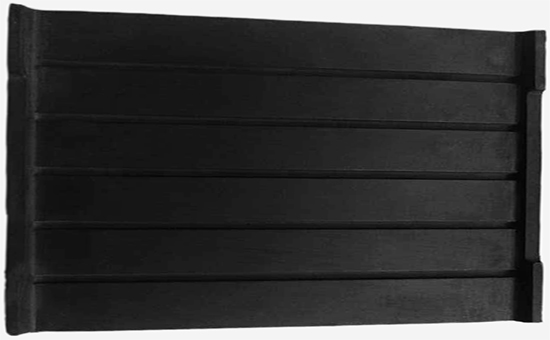
Rubber damping materials require large hysteresis loss, high loss modulus, low storage modulus, and a wide range of effective damping temperatures; Butyl rubber has a short molecular structure with few double bonds, and a high dispersion density of side chain methyl groups. It has excellent characteristics of receiving vibration and impact energy, making it an ideal material for producing damping rubber. The butyl reclaimed rubber retains the basic performance characteristics of butyl rubber and can be used in the production of rubber damping materials. The specific application methods are as follows.
1. Production of rubber damping materials using reclaimed butyl rubber and raw rubber
The butyl reclaimed rubber has good compatibility with butyl rubber, and can be used in any proportion with butyl rubber to produce rubber damping materials, effectively reducing raw material costs; Rational design of the formulation of butyl rubber/butyl reclaimed rubber 2SLYY43 damping material can optimize the variety of damping materials while reducing costs. In practical production, butyl reclaimed rubber can also be used together with chlorinated butyl rubber and ethylene propylene diene monomer rubber to produce rubber damping materials.
2. Production of rubber damping materials using butyl reclaimed rubber and PVC
PVC, or polyvinyl chloride, has non flammability, high strength, resistance to climate change, and excellent geometric stability. It can be used together with butyl reclaimed rubber to prepare thermoplastic elastomer damping materials. When using butyl reclaimed rubber/polyvinyl chloride to prepare damping materials, it is recommended to use CPE to modify PVC. Thermoplastic elastomers have good damping properties, mechanical properties, heat resistance, flame retardancy, etc; Magnetic damping materials can be prepared using butyl reclaimed rubber/PVC filled with appropriate amount of magnetic powder.
3. Reference formula for preparing rubber damping materials from butyl reclaimed rubber
Butyl rubber, 20 parts; Butyl reclaimed rubber, 15 parts, polyisobutylene, 60 parts; Light calcium carbonate 400 mesh, 115 parts; C5 petroleum resin, 30 parts; Carbon black N550, 15 parts; APAO, 5 copies; Liquid petroleum resin, 10 parts; Total: 270 copies.
When butyl rubber/butyl reclaimed rubber is used to produce rubber damping block products, a portion of lightweight calcium carbonate can be replaced with clay or talc powder, among which talc powder is preferably selected from products with a mesh size of more than 1000. Talc powder can be used as a filler material to reduce rubber costs and also alleviate the aging phenomenon of butyl damping block; Calcium carbonate can improve the wear resistance, tensile strength, elongation at break, and surface gloss of rubber damping blocks; Clay can improve the tensile strength, constant elongation stress, water resistance, wear resistance, and corrosion resistance of butyl damping blocks.
In actual production, butyl reclaimed rubber can also be blended with PP materials. In the future, I will continue to share with you the key points of the production process for preparing rubber damping materials using butyl reclaimed rubber.
Exclusive original article [commercial authorization] reprint, excerpt and excerpt in any form are prohibited without written authorization. Focus on Hongyun rubber: learn the process formula and raw material technology of producing rubber products from recycled rubber to help you reduce costs and increase profits